Drugged Out Daily Grind

For some Americans, work is about collaborating with colleagues, climbing the ladder, and breaking glass ceilings. But for people who are addicted to drugs and alcohol, the workday can look vastly different.
To get an inside perspective on drug use in the workplace, we surveyed 1,000 Americans on the subject. Who’s using drugs on the job? What kinds of careers do they have? Which drugs do they take and when? Read on for an insider’s view of using drugs in the workplace.
Most People Have Used Drugs at Work
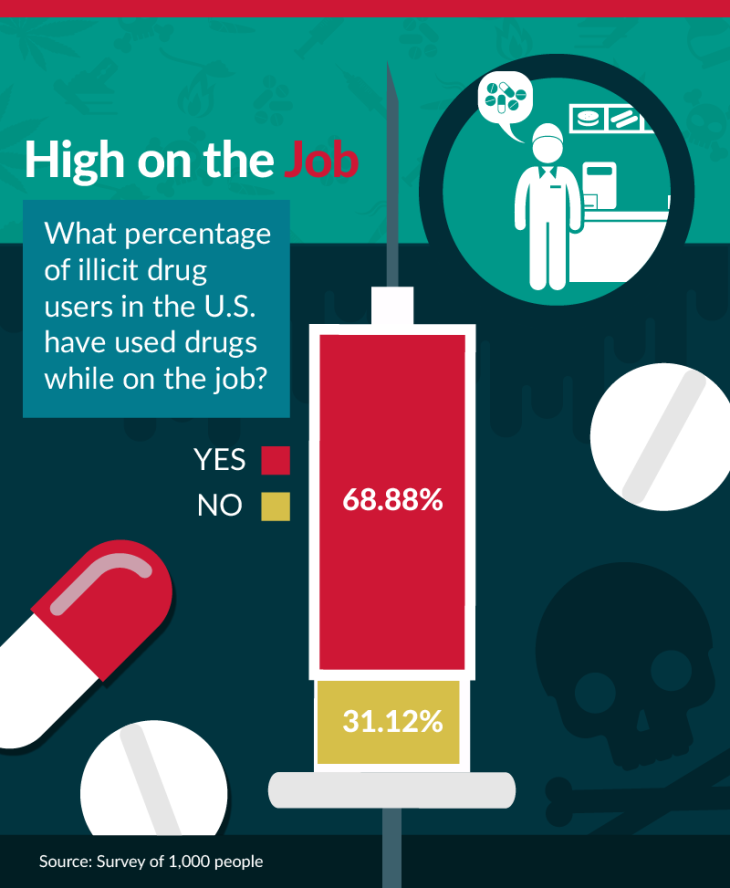
According to our survey, nearly 7 in 10 Americans have used drugs while they were at work—a surprisingly high proportion. This type of substance use on the job can take a major toll on workplace health, safety, and productivity due to factors such as injuries and accidents, an increase in illness, absenteeism, and low morale.
Some believe the rise in drugs among workers simply reflects the country’s growing acceptance of drugs. For instance, more and more Americans support the legalization of marijuana and reject jail time for those found to possess the drug.
On an individual basis, drug use at work may stem from a variety of factors: the stresses of a position, the dislike of a job, sheer boredom, or simply a need or desire to take drugs immediately rather than waiting for later. Some may simply take drugs to stay awake during an exhausting day.
Who’s Really Getting High on the Job?
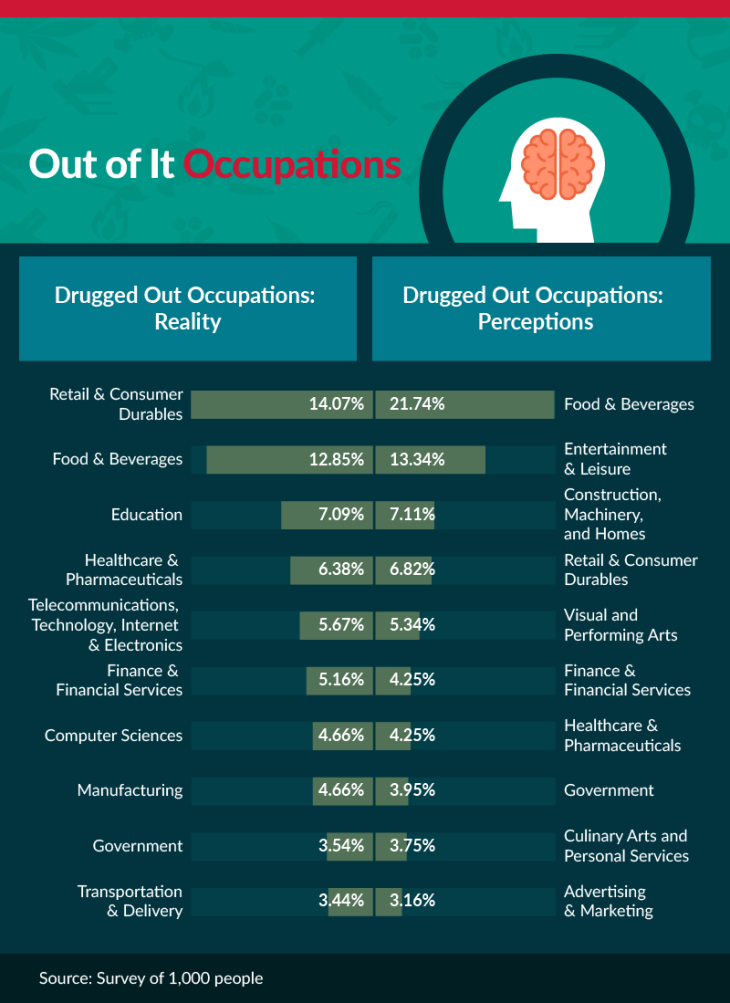
Among respondents who report having used drugs while at work, the retail and food/beverages sectors were the most common. Around 14% of those who had used drugs worked in retail, and another 13% were in the food/beverage industry. Education (7%), healthcare/pharmaceutical (6%), and telecommunications (6%) were also among the most common sectors for drug use.
Reality doesn’t always match perception. When asked which occupations they believed had a high number of people using drugs, our respondents ranked the food and beverages industry first by far, at 22%. They also suspected drug use among those in the entertainment and leisure industry and the construction and machinery sector.
Making Time for Drugs at Work
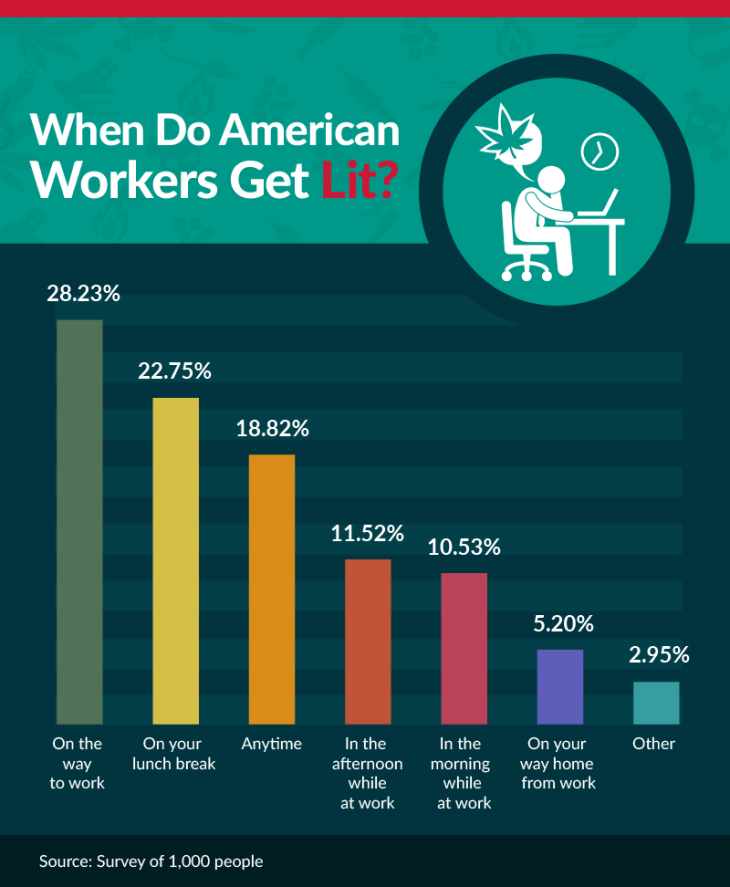
According to one study, workers waste more than two hours during each workday. According to our survey, many workers use drugs during the workday—around 11% in the morning, 12% in the afternoon, and nearly 19% any time.
For many people, though, workplace drug use doesn’t actually mean getting high during the workday. Nearly 30% of people who use drugs at work do so on the way to work. Another 23% use their lunch breaks to do it, while around 5% wait until they’re on the way home.
Making Space for Drug Use in the Workplace
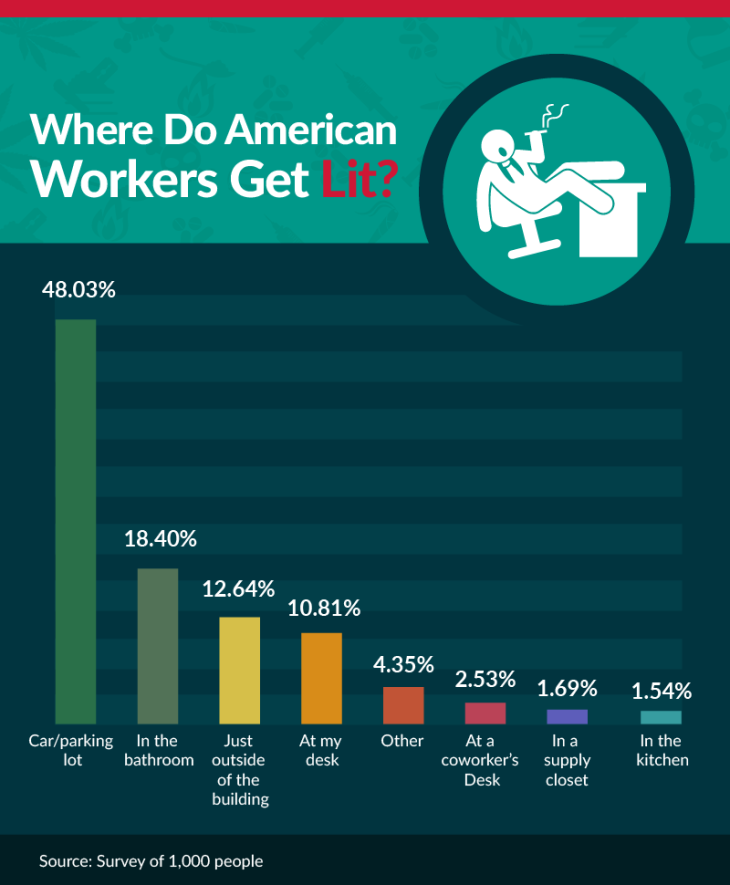
Among those who take drugs during the workday, a staggering 11% are brazen enough to use drugs right at their desk while another 3% do so at a coworker’s desk.
The majority are a bit more discreet: Nearly half move their drug use to their cars or in the parking lot. Another 18% duck into the bathroom and 13% choose to head just outside the building. A few will actually hide in the supply closet to avoid being seen.
However, even when workers are discreet about their drug use, many employers are becoming more savvy about spotting telltale signs. These may include bloodshot eyes, noticeable odors, or an employee who walks around a lot without getting much done. Employers also know to watch for frequent absences or people who come in late and/or leave early.
Beating Drug Tests at Work
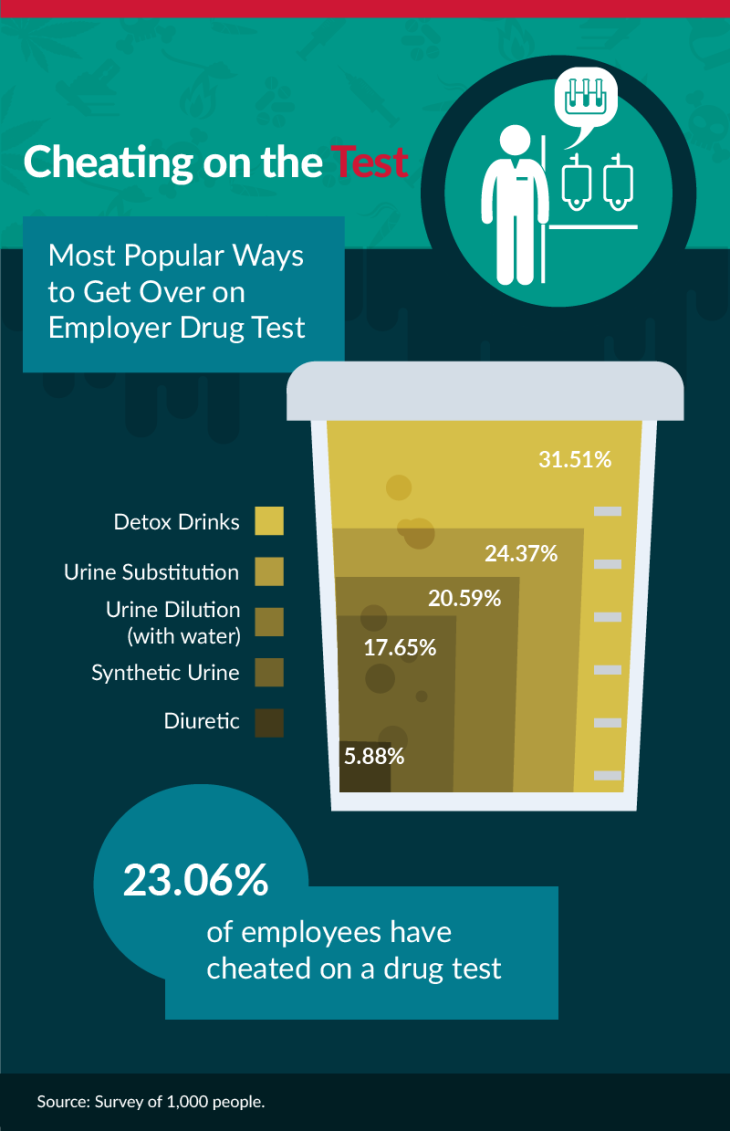
Among our respondents, gulping down detox drinks was the most popular way to attempt to pass a drug test. Swapping urine with a clean sample was another popular method for thwarting the tests, as was diluting urine with water. Using synthetic urine was a slightly less favored method. The least popular tactic? Taking a diuretic—possibly due to the potential side effects, including headaches, dizziness, constipation, and muscle cramps.
Popular Workplace Drugs
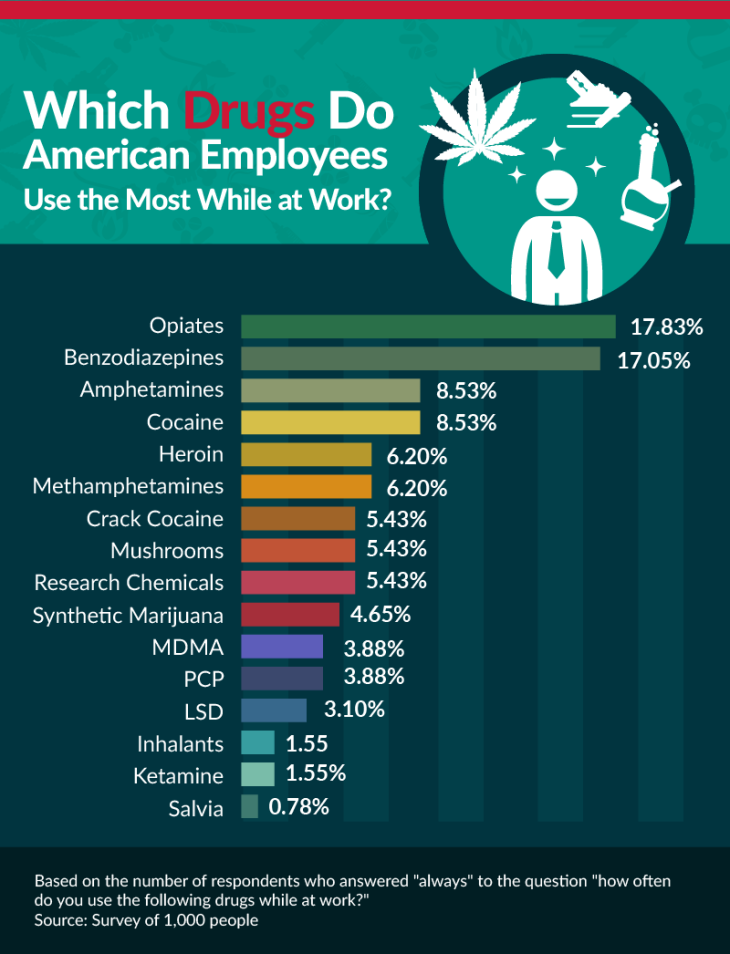
Given the current opiate crisis, it may come as little surprise that opiates are the top drug our survey respondents report using at work. Though sometimes prescribed by doctors, drugs such as OxyContin, Fentanyl, Lorcet, and Vicodin are much like heroin—highly addictive and potentially lethal. Benzos such as Xanax and Valium are nearly as common on the job among our participants.
Though pills may be the most common way to use drugs at work, substances like cocaine, heroin, meth, and crack cocaine all made the list. Among the least common drugs at work were salvia, ketamine, and inhalants.
Drug Use Among Coworkers
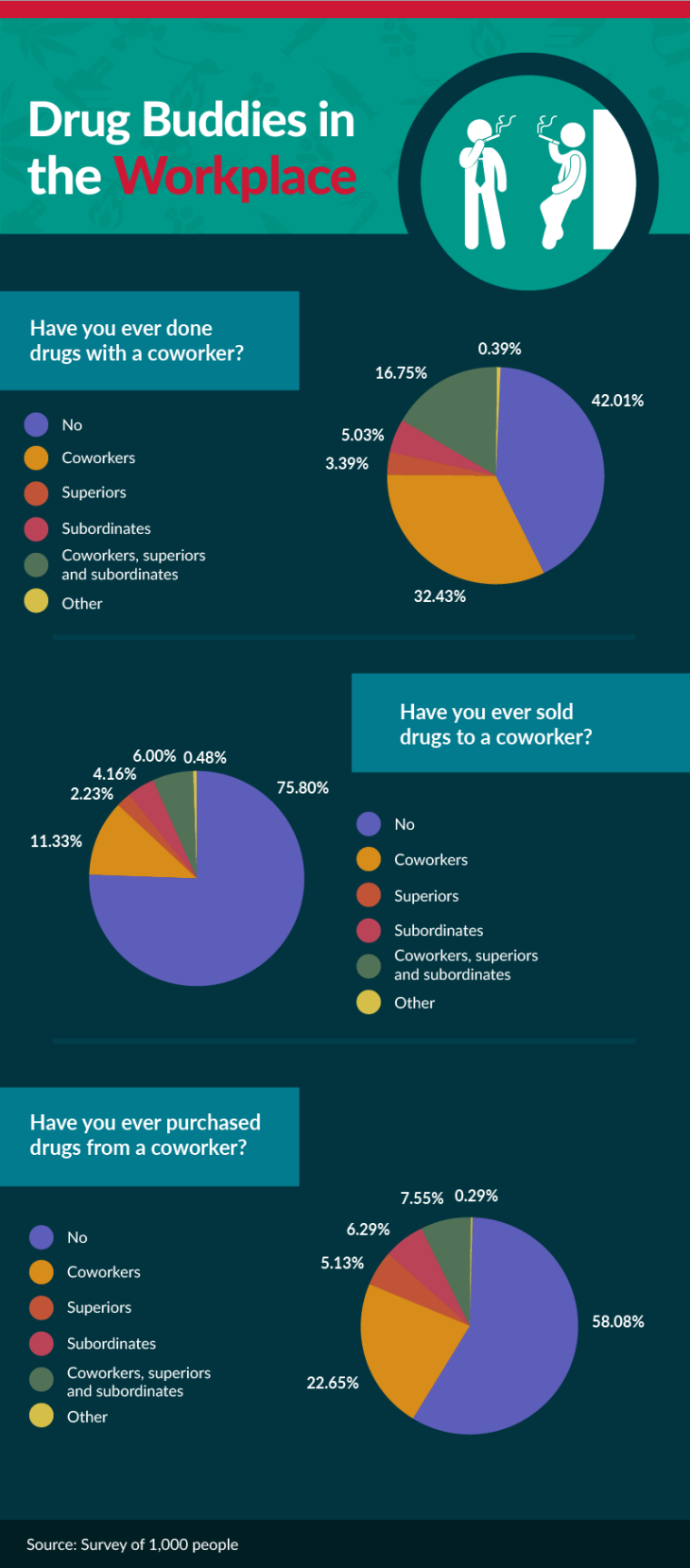
At many workplaces, collaboration is the name of the game. Among our respondents, about 58% say they’ve used drugs with someone else at their workplace. In addition, 32% choose to get high with co-workers, around 5% with a subordinate, and nearly 4% with a superior. Nearly 17% have taken drugs with all three.
Beyond just sharing drugs, some people buy and sell illicit substances at work. Coworkers at the same level are the most common when it comes to both buying and selling. However, a surprisingly high percentage of respondents report they’ve sold drugs to coworkers, subordinates, and superiors.
While bosses are generally the least likely to be involved in transactions, still 9% of respondents say they’ve sold drugs to superiors, and 12% say they’ve bought drugs from them.
Making It Through the Workday
As our survey reveals, a surprising number of Americans across a variety of industries are regularly taking drugs at work. Many factors come into play, from the stresses of the job to the availability of the substances; however, one thing is certain: Taking drugs on the job is never a good idea. If you or someone you care about is struggling with addiction, there is help available.
Methodology
We surveyed 1,121 people who reported using drugs while being employed. Our respondents chose to participate in the survey, and the only qualifiers were that the people surveyed had to have used drugs while being employed. Marijuana was left out due to its varying legality in some states in the U.S.

